IELTS Writing: Tips, Sample Answers and Strategies for Success
– By Mock Test IELTS

Preparing for the IELTS Writing Test can be challenging, but with the right guidance and practice, you can achieve your desired score. Our comprehensive tips will cover various aspects of the test, including understanding the assessment criteria, managing time effectively, structuring your essays, and using appropriate vocabulary and grammar.
Additionally, we will provide sample answers that demonstrate the key elements required to score well in each task. These samples will serve as a reference point to help you understand how to structure your responses effectively and showcase your language proficiency.
IELTS Writing Test
The IELTS writing test is an essential component of the International English Language Testing System (IELTS) exam. It evaluates a candidate’s ability to communicate effectively in written English, assessing their skills in areas such as grammar, vocabulary, coherence, and task response.
Preparing for the IELTS writing test involves practicing various types of writing tasks, familiarizing oneself with the assessment criteria, and seeking feedback from experienced tutors or language experts. With consistent practice and guidance, candidates can enhance their writing skills and increase their chances of achieving their desired band score in the IELTS exam.
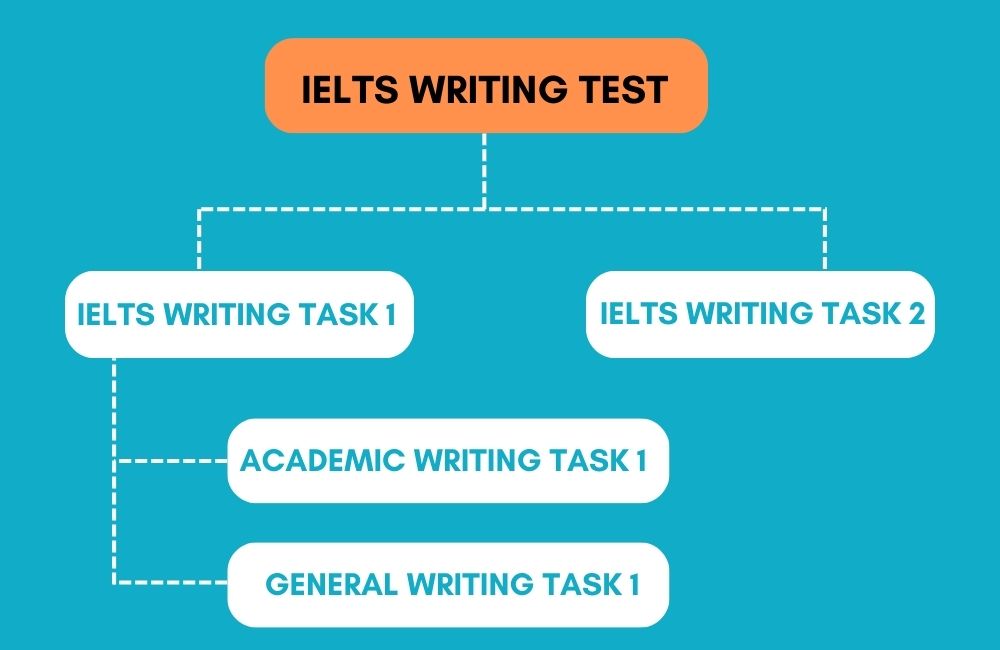
In the IELTS writing module, there are different types of tasks that test takers need to be familiar with. These tasks assess a candidate’s ability to effectively communicate in written English across various formats and styles.
IELTS Writing Task 1
When it comes to the IELTS writing task, students often find themselves faced with a choice between the academic or general module. This decision depends on their specific goals and needs.
For students aiming to pursue higher education in an English-speaking country, the IELTS writing task academic module is the appropriate choice. This module assesses their ability to write academically, analyze data, present arguments, and express their thoughts clearly in a formal manner.
On the other hand, individuals seeking immigration or work opportunities in an English-speaking country should opt for the IELTS writing task general module. This module assesses their ability to communicate effectively in everyday situations through letter writing, expressing opinions, and providing information.
When it comes to the IELTS writing task 1, candidates are usually required to complete either the academic or general training version. These two versions have distinct differences in terms of content and purpose.
IELTS Academic Writing Task 1
In this task, candidates are required to analyze and interpret visual information such as graphs, charts, or diagrams. The goal is to effectively convey the key trends and significant features of the data in a clear and concise manner.
To make the most of your limited time, it is essential to have a structured approach. Begin by carefully examining the given visual data and identifying its main components. Also, pay attention to any noticeable patterns or outliers that can be highlighted in your response.
Remember, your goal is not only to describe the visual data but also to provide meaningful analysis. This includes highlighting significant features, making comparisons where applicable, and drawing logical conclusions based on the presented information.
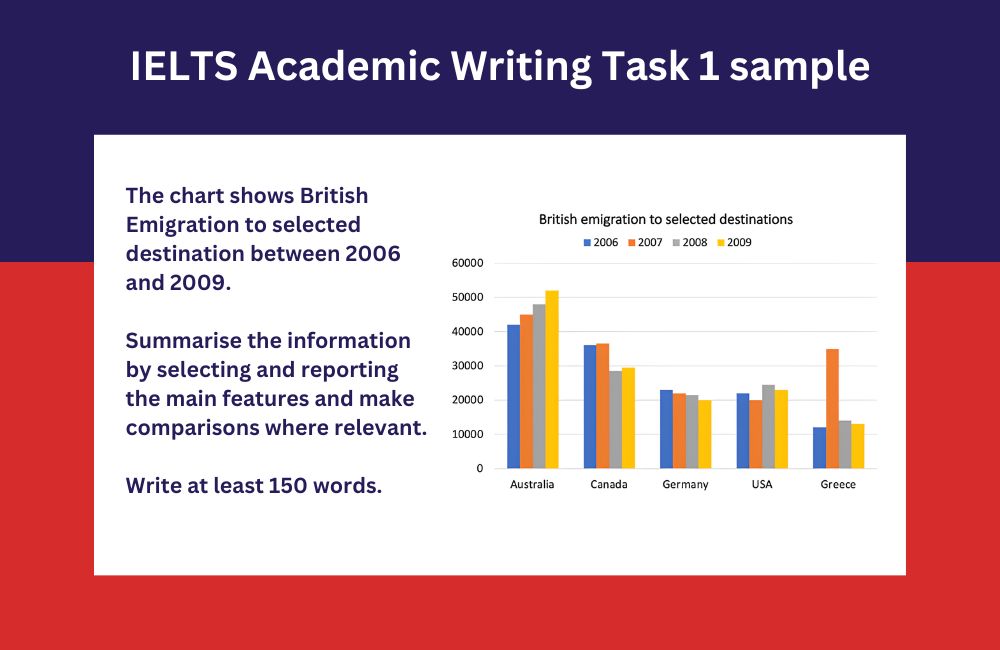
IELTS General Writing Task 1
The IELTS Writing General Task 1 is an important component of the IELTS exam, specifically designed to assess your letter writing skills. This section requires you to write a letter in response to a given situation or request.
To excel in the IELTS Writing General Task 1, it is essential to understand the specific requirements and format of this section. You will be presented with different scenarios, such as writing a formal or informal letter to a friend, colleague, or authority figure.
By familiarizing yourself with various types of letters and practicing different writing styles, you can enhance your skills and confidently tackle any given situation in this task.
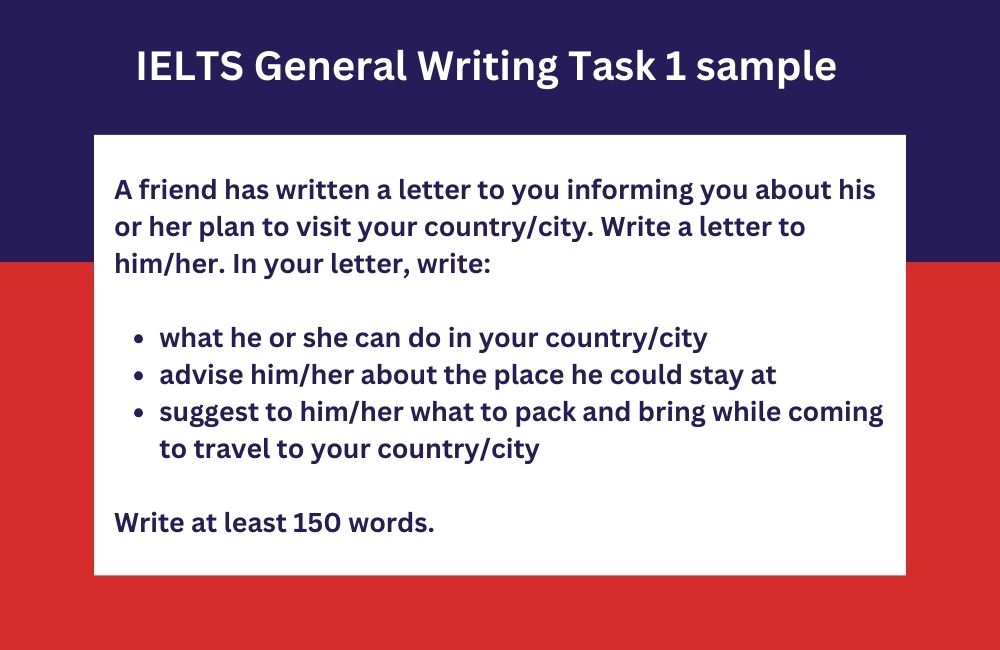
The IELTS Writing Task 2 holds significant importance for both academic and general candidates. Whether you are preparing for the academic or general module of the IELTS exam, writing Task 2 is an essential component that every candidate must tackle.
IELTS Writing Task 2
The IELTS Writing Task 2 section is designed to assess your ability to write a well-structured essay on a given topic. This task requires you to demonstrate your language proficiency, critical thinking skills, and ability to express your ideas effectively within a limited time frame.
One crucial aspect of the IELTS Writing Task 2 is time management. Candidates are advised to spend not more than 40 minutes on this task, as it allows for sufficient planning, writing, and editing. This time constraint challenges you to think quickly and organize your thoughts efficiently.
To make the most of your time, it is crucial to have a well-structured essay that effectively addresses the prompt. This means organizing your thoughts and ideas in a logical manner, ensuring coherence and clarity throughout your writing.
A strong introduction that clearly states your position on the topic will set the tone for the rest of your essay. Follow this with body paragraphs that provide supporting evidence and examples to strengthen your argument. Finally, conclude by summarizing your main points and restating your stance.

After understanding the writing tasks, it is important for candidates to learn and follow the prescribed format to maximize their chances of achieving a high score. Moreover, understanding the importance of the IELTS writing format helps test takers manage their time effectively during the exam.
IELTS Writing Format
In this section, we will explore the formats for both Task 1 (academic and general) and Task 2, providing you with the essential guidelines to excel in your IELTS writing test.
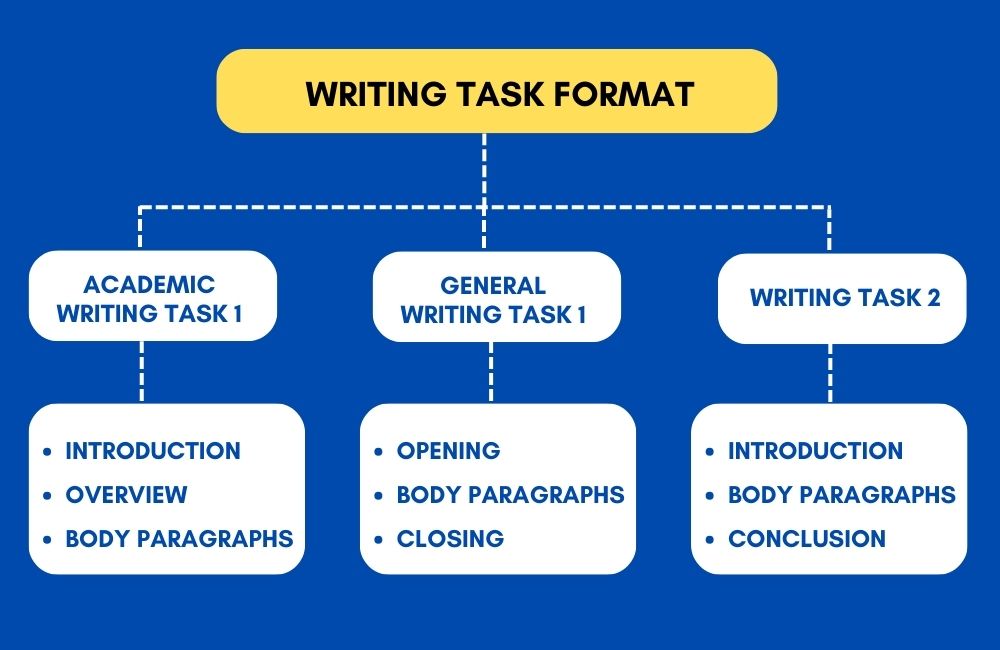
IELTS Academic Writing Task 1 Format
In this task, you will be presented with a graph, chart, table, or diagram that represents data in various forms. Your task is to summarize and describe the information accurately within a specific word limit.
The format typically consists of three main parts: an introduction, an overview, and detailed information or analysis of the data.
1. Introduction: The introduction should solely consist of paraphrasing the given question. Paraphrasing the question is essential as it demonstrates your understanding of the task and allows you to showcase your language skills.
2. Overview: The overview is a concise summary that highlights the main features or trends depicted in the visual representation. It should give the reader a clear understanding of what they can expect from the detailed information that follows.
3. Body: In the body paragraphs, you will need to provide specific details about the data using accurate descriptions and comparisons. This may involve describing changes over time, making comparisons between different categories or groups, or identifying significant points within the data.
By understanding and following the prescribed format for IELTS Writing Task 1 Academic, you will be better equipped to showcase your ability to analyze data effectively while demonstrating strong English language skills.
IELTS General Writing Task 1 Format
In the IELTS General Writing Task 1, you will be presented with a situation and asked to write a formal, informal or semi-formal letter in response. The purpose of this task is to assess your ability to communicate effectively in writing, particularly in practical everyday situations.
The format of the IELTS General Writing Task 1 typically includes three main sections:
1. Opening: Begin your letter with an appropriate greeting and introduction, addressing the recipient appropriately based on the given scenario.
2. Body: In this section, you should provide relevant information and address all the points mentioned in the question. It is recommended to divide your response into separate paragraphs based on each point mentioned in the prompt. This helps organize your thoughts and makes your letter more coherent and structured.
3. Closing: Conclude your letter by summarizing your main points and offering any necessary closing remarks or suggestions. End with an appropriate closing phrase and sign off using an appropriate salutation.
It is important to remember that clarity, coherence, accuracy, and appropriateness of language are key factors in scoring well on this task. Pay attention to grammar, vocabulary, punctuation, and spelling throughout your response.
IELTS Writing Task 2 Format
In order to excel in the IELTS Writing Task 2, it is essential to understand and follow the correct format. The format plays a crucial role in organizing your thoughts and presenting them effectively.
Typically, an effective essay structure for IELTS Writing Task 2 includes an introduction, body paragraphs, and a conclusion.
1. Introduction: The introduction should provide background information on the topic and present your thesis statement or main argument.
2. Body: The body paragraphs should each focus on one main idea or supporting point, supported by relevant examples or evidence. It is important to use cohesive devices such as linking words and phrases to ensure smooth transitions between paragraphs.
3. Conclusion: The conclusion should summarize your main points and restate your thesis in different words. It is also beneficial to provide some final thoughts or recommendations related to the topic.
By adhering to this format and practicing regularly, you can improve your ability to effectively communicate ideas within the constraints of the IELTS Writing Task 2 exam.
Preparing for the IELTS writing test at home can seem challenging, but with a structured approach and the right resources, you can effectively improve your writing skills and boost your chances of scoring well.
How to Prepare for IELTS Writing at Home
Here are a few steps that you can take to effectively prepare for the writing section of the IELTS exam from the comfort of your own home.
IELTS Writing Vocabulary

Developing a strong vocabulary is essential for success in the IELTS writing test. Not only does it enhance your ability to express yourself effectively, but it also demonstrates a higher level of language proficiency to the examiners.
Having an extensive range of IELTS vocabulary allows you to convey your ideas with precision and clarity. It enables you to use a variety of words and phrases that are relevant and appropriate for different topics and contexts.
Furthermore, a diverse vocabulary helps you avoid repetition in your writing, making your essays more engaging and compelling. It allows you to showcase your language skills by using synonyms, idiomatic expressions, and collocations that demonstrate a deeper understanding of the English language.
By expanding your IELTS vocabulary, you can confidently tackle various question types in the writing test. Whether it’s describing trends, expressing opinions, or presenting arguments, having an array of words at your disposal will enable you to articulate your thoughts effectively.
So, make it a priority to engage in regular vocabulary practice exercises and actively incorporate new words into your daily conversations. By doing so, you will enhance not only your performance in the IELTS writing test but also your overall English language skills.
Learn and practice IELTS Vocabulary
Conducted by mocktestielts.com
IELTS Writing Idea Generation
In the IELTS writing section, one of the key challenges that test takers face is generating ideas quickly and effectively. The ability to come up with relevant and compelling ideas is crucial for achieving a high score in this section.
To excel in idea generation for IELTS writing, it is essential to practice various exercises that stimulate your creativity. These exercises can involve brainstorming, mind mapping, or even free-writing on different topics. By engaging in these activities regularly, you can strengthen your ability to generate ideas on demand.
Furthermore, practicing idea generation on a wide range of topics will enhance your versatility and adaptability. This will enable you to confidently tackle any given topic during the exam and showcase your ability to think critically and analytically.
Remember that idea generation is not just about quantity but also quality. It is important to develop well-rounded and coherent ideas that are supported by evidence or examples. This will demonstrate your ability to present a strong argument or perspective in your writing.
By dedicating time and effort to practice idea generation exercises and diversifying your topic range, you can significantly improve your performance in the IELTS writing section. So start honing this essential skill today and boost your chances of achieving an impressive score!
Learn and practice IELTS Idea Generation
Conducted by mocktestielts.com
IELTS Writing Grammar

Having a strong command of grammar is crucial for students who are preparing for the IELTS writing exam. In order to achieve a high score, it is essential to demonstrate accurate and error-free grammar usage throughout your essays.
The IELTS writing section assesses not only your ability to convey ideas effectively but also your proficiency in using grammatical structures correctly. Even the most well-developed arguments and ideas can be undermined if they are riddled with grammatical errors.
For students who struggle with grammar, it is important to dedicate time and effort to improving this aspect of their writing skills. By studying and practicing various grammatical rules, students can gradually eliminate common mistakes and develop a more polished writing style.
Grammar exercises play a vital role in this process. They provide students with an opportunity to practice various grammar concepts and identify areas where they need improvement. By regularly engaging in these exercises, students can reinforce their knowledge and develop a more intuitive understanding of correct grammatical usage.
Learn and practice IELTS Grammar
Conducted by mocktestielts.com
IELTS Writing Complex Sentence Structure
Mastering complex sentence structures is vital for achieving higher bands in IELTS writing. Being able to combine two or three sentences into one complex sentence demonstrates a higher level of language proficiency and sophistication.
In IELTS writing, examiners are looking for candidates who can effectively convey their ideas with clarity and precision. By using complex sentence structures, you can showcase your ability to express a range of ideas within a single sentence, demonstrating your command over the English language.
However, it is important to strike a balance between complexity and clarity. While it is essential to showcase your ability to create longer sentences, it is equally important to ensure that the sentences remain concise and coherent. Paying attention to the number of words in a sentence will help you avoid unnecessary wordiness and maintain clarity in your writing.
By honing your skills in constructing complex sentence structures, you will not only enhance the overall quality of your writing but also increase your chances of achieving higher bands in the IELTS exam.
Learn and practice IELTS Complex Sentences
Conducted by mocktestielts.com
IELTS Writing Connectors
In IELTS writing, the effective use of connectors is necessary to maintain a smooth flow in your task. These linking words or phrases help connect two sentences or ideas seamlessly, allowing your writing to appear cohesive and well-structured.
IELTS writing connectors serve as bridges between different parts of your essay, enabling you to express relationships and transitions between ideas. By utilizing appropriate connectors, you can enhance the coherence and clarity of your writing, which are essential for achieving a higher band score.
Whether you are expressing cause and effect, comparing and contrasting, giving examples, or simply adding information, mastering a variety of IELTS writing connectors will significantly improve the overall quality of your essay. It demonstrates your ability to organize your thoughts logically and effectively communicate them to the reader.
By incorporating these connectors into your writing practice, you will develop a strong foundation for tackling any IELTS writing task with confidence. So let’s delve into the world of IELTS writing connectors and discover how they can elevate the quality of your essays to new heights.
Learn and practice IELTS Writing Connectors
Conducted by mocktestielts.com
Free IELTS Writing Checker by IELTS Experts
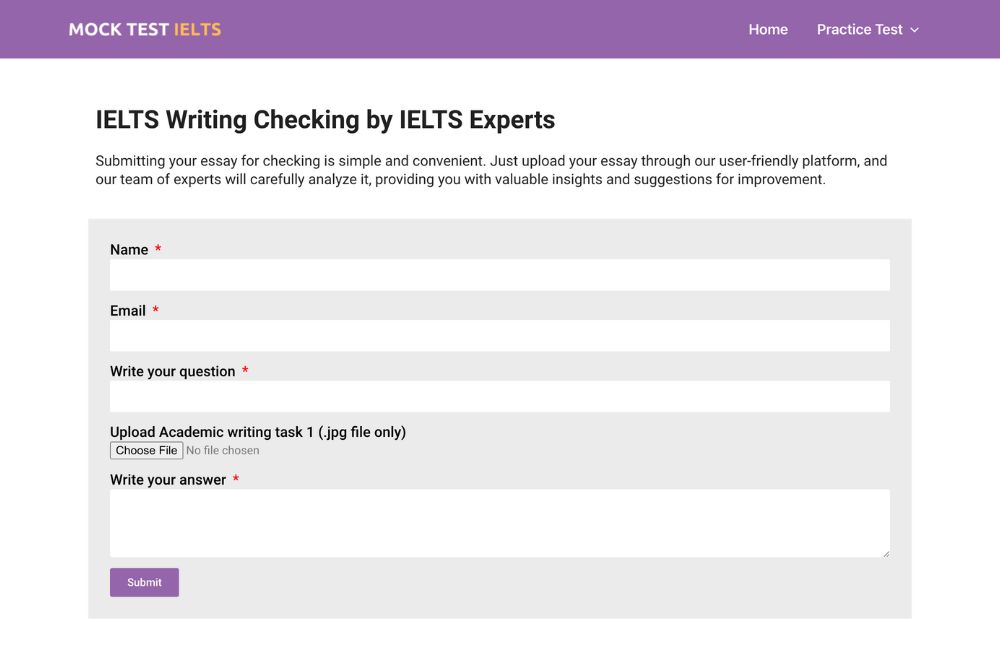
When it comes to preparing for the IELTS writing exam, getting your work checked by an experienced IELTS teacher can make a significant difference in your performance. The expertise and guidance of an IELTS teacher can help you identify and rectify any errors or weaknesses in your writing, ultimately improving your overall score.
We have introduced a tool called IELTS Writing Checker that offers a free evaluation of your IELTS writing tasks, providing you with valuable feedback and corrections by experienced IELTS teachers.
With the IELTS Writing Checker, you can submit your essays or letters and have them checked by an experienced IELTS expert. This ensures that you receive accurate and reliable feedback on areas such as grammar, vocabulary, coherence, and task response.
The best part? It’s completely free! You no longer have to spend hefty amounts on professional evaluations or correction services. The IELTS Writing Checker offers a convenient and cost-effective solution for aspiring test-takers.
Whether you are a self-study learner or attending an IELTS preparation course, the IELTS Writing Checker is an invaluable resource that will help enhance your writing skills. Don’t miss out on this opportunity to receive professional feedback on your essays at no cost.
Take advantage of this free IELTS writing evaluation tool today and take one step closer towards achieving success in your IELTS exam!
Free IELTS Writing Checker by IELTS Experts
Conducted by mocktestielts.com
Practice on IELTS Writing Answer Sheet
When it comes to preparing for the IELTS writing test, having access to a sample answer sheet can be incredibly helpful. It provides you with a structure to practice writing answers in a realistic exam setting.
It also allows you to familiarize yourself with the official answer sheet used in the actual test, ensuring that you are well-prepared and comfortable when it comes time to sit for the exam. By practicing on this answer sheet, you can develop a better understanding of how to effectively structure your paragraphs and manage your time during the exam.
Furthermore, using the IELTS writing sample answer sheet helps build confidence. As you become more comfortable with the writing on these sample answer sheets, you will feel more at ease when it’s time to sit down and write during the actual exam. This increased confidence can have a positive impact on your overall performance.
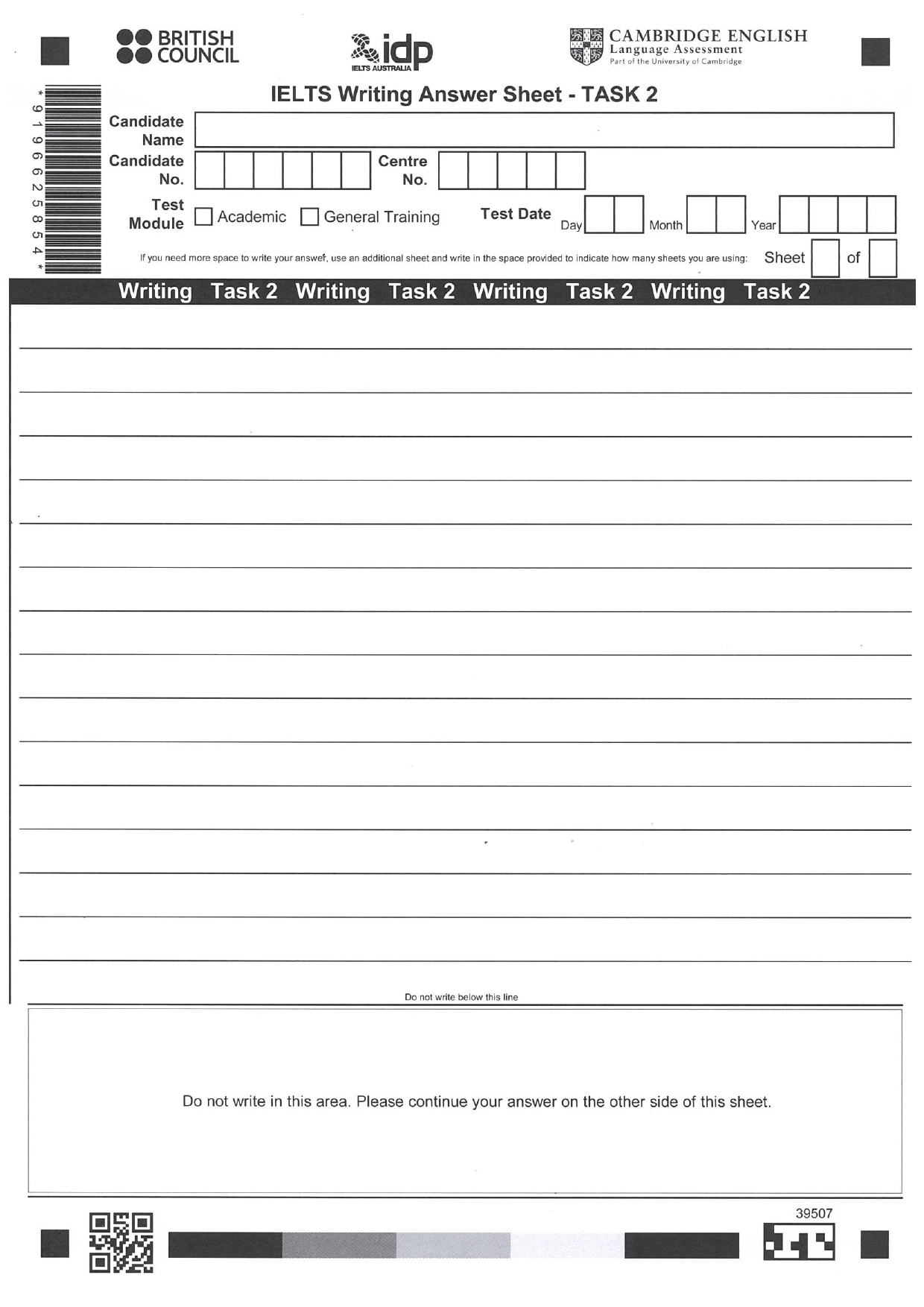
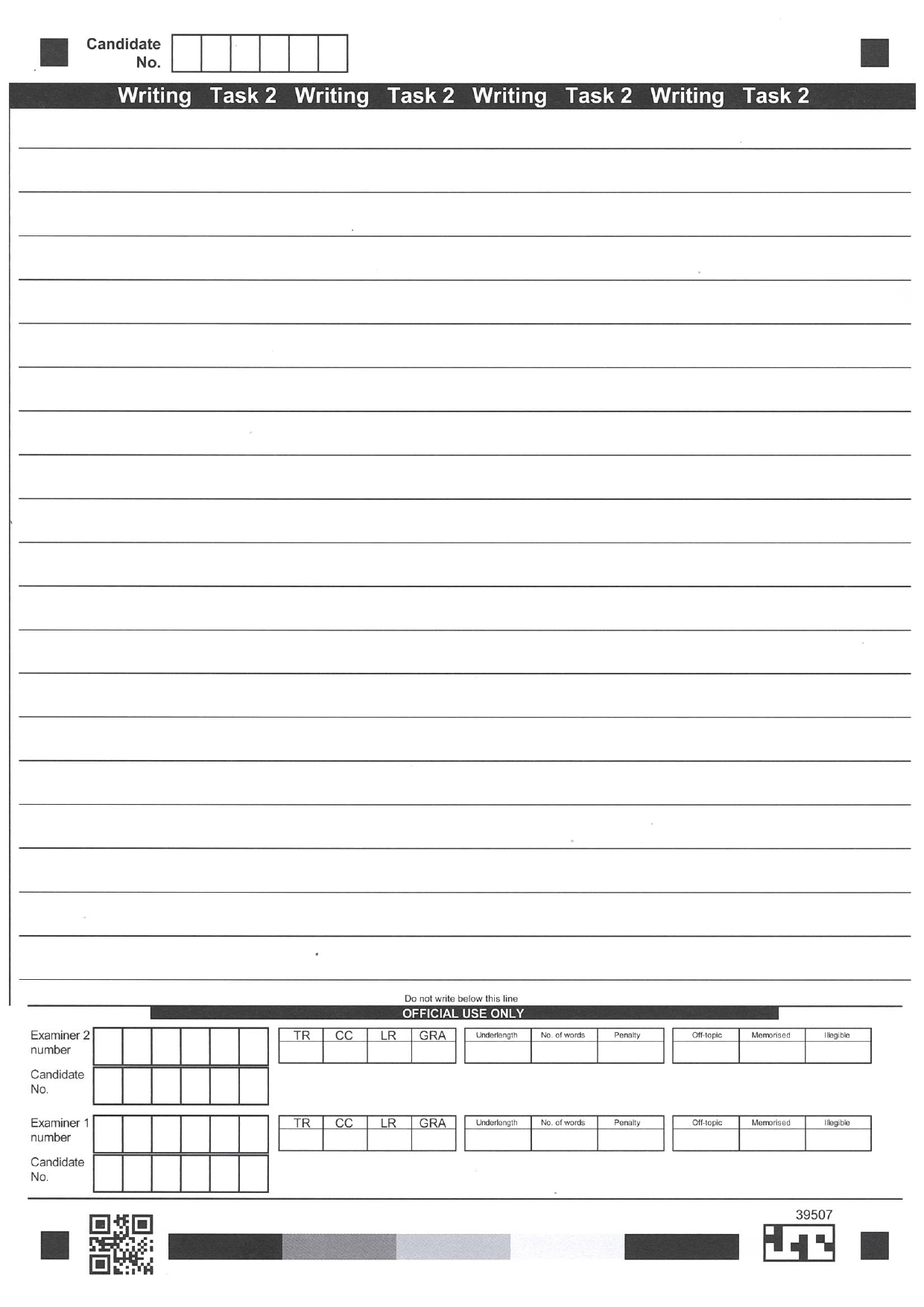
In the next section, we will provide IELTS writing sample questions along with their answers. This will give you a better understanding of what to expect in the writing section of the IELTS exam and how to structure your responses effectively.
IELTS Writing Practice Questions with Sample Answers
In this section, we will provide you with carefully selected IELTS writing sample questions along with model answers to help you understand the format and improve your writing skills.
IELTS Academic Writing Task 1 Questions with Sample Answers
Check out the following questions with sample answers:
Mock Test 1: The bar chart shows British Emigration
Mock Test 2: The bar chart shows a comparison of the daily routines
Mock Test 3: The line graph below shows changes in the amount and type of fast food consumed
Mock Test 4: The graph below shows the average number of American commuters travelling
Mock Test 5: The pie chart below shows the native languages spoken by students
Mock Test 6: The pie charts show the main reasons for migration
Mock Test 7: The chart below shows the process of waste paper recycling
Mock Test 8: The diagram below shows the water cycle
Mock Test 9: The table below gives information on consumer spending on different items
Mock Test 10: The table shows the proportions of schoolchildren attending four school categories
Mock Test 11: The map illustrate how Milton changed from a small village
Mock Test 12: The following map shows the current and future developments of Crypto Town Centre
Mock Test 13: The graph below gives information about international migration to Canada
Mock Test 14: The graph shows the cost for watching films
IELTS General Writing Task 1 Questions with Sample Answers
Check out the following questions with sample answers:
IELTS Writing Mock Test 1: You were supposed to go on an interview
IELTS Writing Mock Test 2: You are applying for membership at a local sports club
IELTS Writing Mock Test 3: Your friend recently invited you to a marriage anniversary party
IELTS Writing Mock Test 4: A friend has written a letter to you informing you about his or her plan
IELTS Writing Mock Test 5: You are employed full-time and also doing a part-time evening course
IELTS Writing Mock Test 6: You are applying for a job and need a letter of reference
IELTS Writing Task 2 Questions with Sample Answers
Check out the following questions with sample answers:
Mock Test 1: Some people think that the best way to reduce crime is to give death penalty
Mock Test 2: Some people believe that studying at the university or college is the best route
Mock Test 3: Government investment in sports is a waste of money
Mock Test 4: In many cities, there are areas of land that are used as parks
Mock Test 5: In some countries, people are forced to retire when they reach a certain age
Mock Test 6: The use of e-books is increasing day by day
Mock Test 7: Explain some of the ways in which humans are damaging the environment
Mock Test 8: People who travel to another country to live, work or study for a period of time
Mock Test 9: Many couples end their marriages with a divorce
Mock Test 10: Stress is now a major problem in many countries around the world
Mock Test 11: Many people prefer to watch foreign films rather than locally produced films
Mock Test 12: More and more people are migrating to big cities in search of a better life
After this, understanding the key assessment criteria for IELTS writing is essential for anyone preparing for this exam. These criteria act as a guide to help candidates understand what is expected and how their writing will be evaluated.
IELTS Writing Key Assessment Criteria
Both the Academic and General Training Writing Modules consist of two tasks, Task 1 and Task 2. Each task is assessed independently. The assessment of Task 2 carries more weight in marking than Task 1. The key criteria for Task 1 and Task 2 are as follows:
For Task 1 of both the AC and GT Writing tests, the key criteria are:
- Task Achievement
- Coherence and Cohesion
- Lexical Resource
- Grammatical Range and Accuracy
For Task 2 of both the AC and GT Writing tests, the key criteria are:
- Task Response
- Coherence and Cohesion
- Lexical Resource
- Grammatical Range and Accuracy
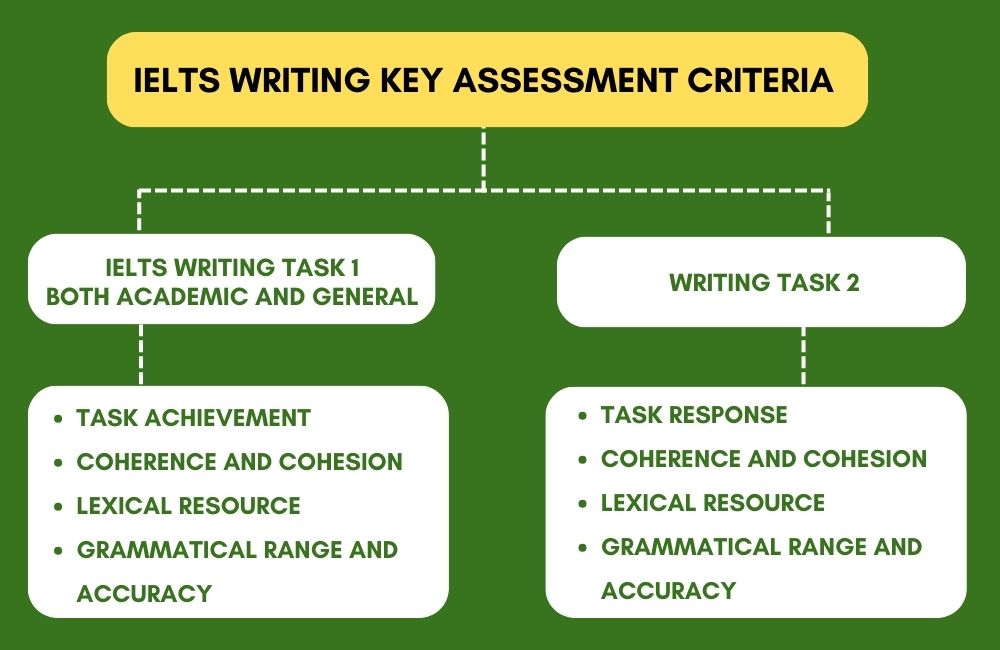
TASK 1
TASK ACHIEVEMENT (TA)
For Task 1 of both AC and GT Writing tests, this criterion assesses how fully, appropriately, accurately and relevantly the response fulfils the requirements set out in the task, using a minimum of 150 words.
Academic Writing Task 1
This Writing task has a defined input and a largely predictable output. It is basically an information-transfer task, which relates narrowly to the factual content of a diagram, graph, table, chart, map or other visual input, not to speculative explanations that lie outside the given data.
The TASK ACHIEVEMENT (TA) criterion assesses the ability to summarise the information provided in the diagram by:
- selecting key features of the information.
- providing sufficient detail to illustrate these features.
- reporting the information, figures and trends accurately.
- comparing or contrasting the information by adequately highlighting the identifiable trends, principal changes or differences in the data and other inputs (rather than mechanical description reporting detail).
- presenting the response in an appropriate format.
General Training Writing Task 1
This Writing task also has a largely predictable output in that each task sets out the context and purpose of the letter and the functions the candidate should cover in order to achieve this purpose.
The TASK ACHIEVEMENT (TA) criterion assesses the ability to:
- clearly explain the purpose of the letter.
- fully address the three bullet-pointed requirements set out in the task.
- extend these three functions appropriately and relevantly.
- use an appropriate format for the letter.
- consistently use a tone appropriate to the task.
TASK 2
TASK RESPONSE (TR)
For Task 2 of both AC and GT Writing tests, candidates are required to formulate and develop a position in relation to a given prompt in the form of a question or statement, using a minimum of 250 words. Ideas should be supported by evidence, and examples may be drawn from a candidate’s own experience.
The TASK RESPONSE (TR) criterion assesses:
- how fully the candidate responds to the task.
- how adequately the main ideas are extended and supported.
- how relevant the candidate’s ideas are to the task.
- how clearly the candidate opens the discourse, establishes their position and formulates conclusions.
- how appropriate the format of the response is to the task.
Task 1 and Task 2
COHERENCE AND COHESION (CC)
This criterion is concerned with the overall organisation and logical development of the message: how the response organises and links information, ideas and language.
Coherence refers to the linking of ideas through logical sequencing, while cohesion refers to the varied and appropriate use of cohesive devices (e.g. logical connectors, conjunctions and pronouns) to assist in making clear the relationships between and within sentences.
The COHERENCE AND COHESION (CC) criterion assesses:
- the coherence of the response via the logical organisation of information and/or ideas, or the logical progression of the argument.
- the appropriate use of paragraphing for topic organisation and presentation.
- the logical sequencing of ideas and/or information within and across paragraphs.
- the flexible use of reference and substitution (e.g. definite articles, pronouns).
- the appropriate use of discourse markers to clearly mark the stages in a response, e.g. [First of all | In conclusion], and to signal the relationship between ideas and/or information, e.g. [as a result | similarly].
Task 1 and Task 2
LEXICAL RESOURCE (LR)
This criterion refers to the range of vocabulary the candidate has used and the accuracy and appropriacy of that use in terms of the specific task.
The LEXICAL RESOURCE (LR) criterion assesses:
- the range of general words used (e.g. the use of synonyms to avoid repetition).
- the adequacy and appropriacy of the vocabulary (e.g. topic-specific items, indicators of writer’s attitude).
- the precision of word choice and expression.
- the control and use of collocations, idiomatic expressions and sophisticated phrasing.
- the density and communicative effect of errors in spelling.
- the density and communicative effect of errors in word formation.
Task 1 and Task 2
GRAMMATICAL RANGE AND ACCURACY (GRA)
This criterion refers to the range and accurate use of the candidate’s grammatical resource via the candidate’s writing at sentence level.
The GRAMMATICAL RANGE AND ACCURACY (GRA) criterion assesses:
- the range and appropriacy of structures used in a given response (e.g. simple, compound and complex sentences).
- the accuracy of simple, compound and complex sentences.
- the density and communicative effect of grammatical errors.
- the accurate and appropriate use of punctuation.
After the assessment criteria, understanding the IELTS writing band descriptors is essential for anyone preparing for the exam. These descriptors provide a clear framework for assessing and scoring your writing skills, helping you to identify areas of strength and areas that need improvement.
IELTS Writing Band Descriptors
Understanding the IELTS band descriptors is essential for anyone preparing for the exam. These descriptors provide a clear and detailed breakdown of what is expected at each band level, helping test takers to assess their own abilities and identify areas for improvement.
The IELTS band descriptors cover four key areas: Task Achievement, Coherence and Cohesion, Lexical Resource, and Grammatical Range and Accuracy. Each of these areas is further divided into specific criteria that are used to evaluate a candidate’s performance.
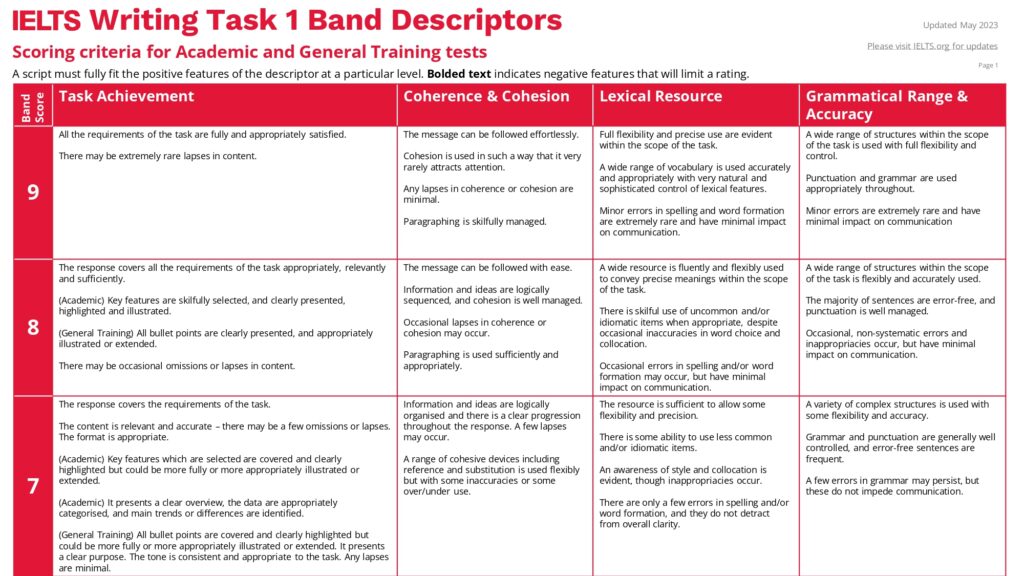
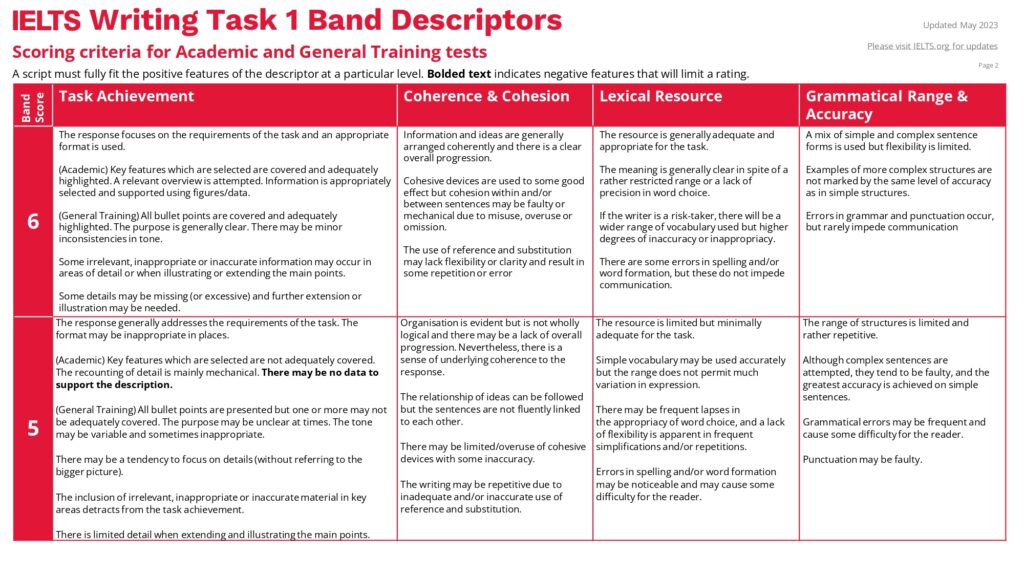
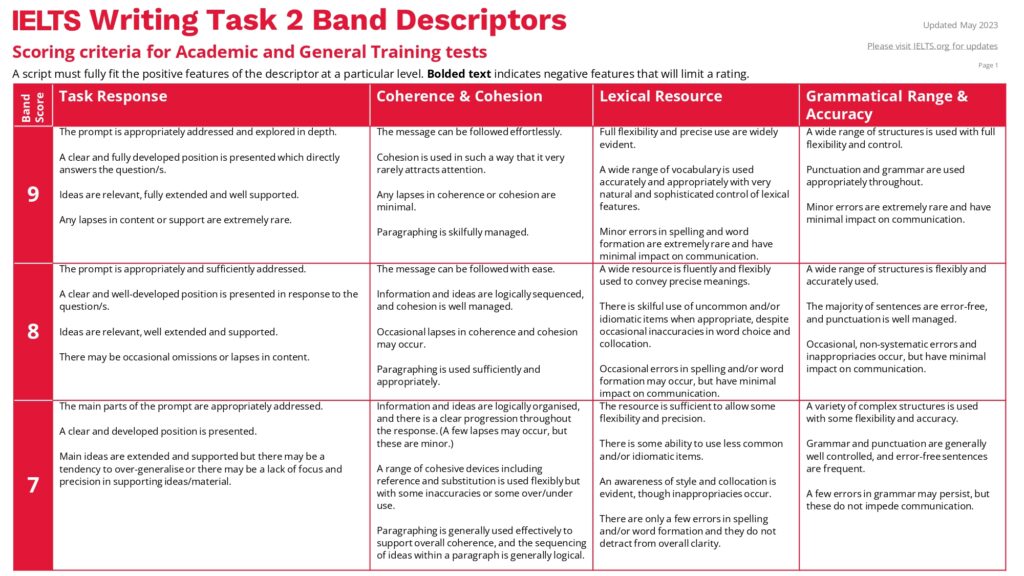
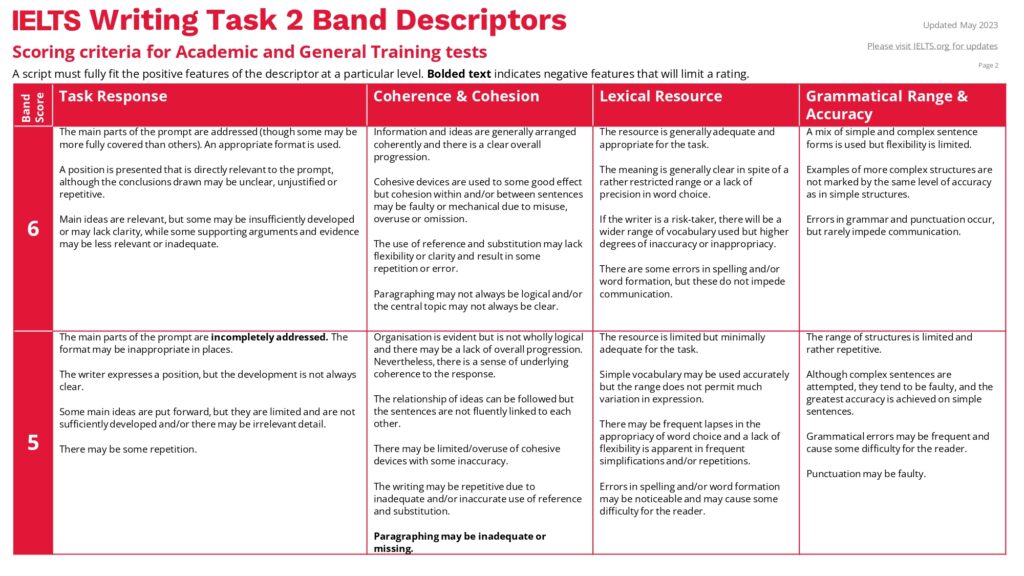
Conclusion
In conclusion, preparing for the IELTS writing task requires diligent practice and attention to detail. Familiarizing oneself with the IELTS writing format is essential, as it sets the foundation for effective responses.
Practicing a variety of questions helps develop the ability to adapt and respond appropriately in different scenarios. Additionally, dedicating time to enhancing vocabulary and grammar skills enables candidates to express their ideas accurately and effectively.
Moreover, mastering the art of constructing complex sentences showcases a higher level of language proficiency and can significantly boost one’s overall score.
Lastly, understanding the assessment criteria used by examiners can provide valuable insights into what they are looking for in a well-written response. By aligning your writing with these criteria, you can maximize your chances of achieving a high score.
